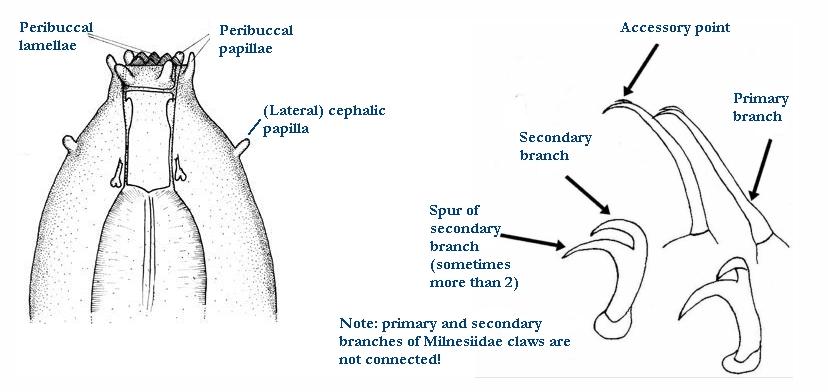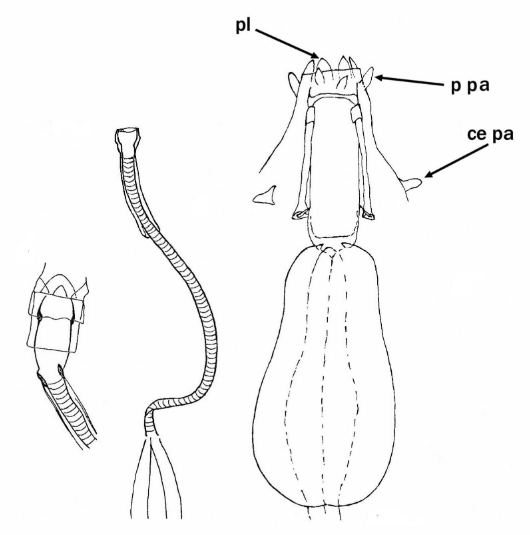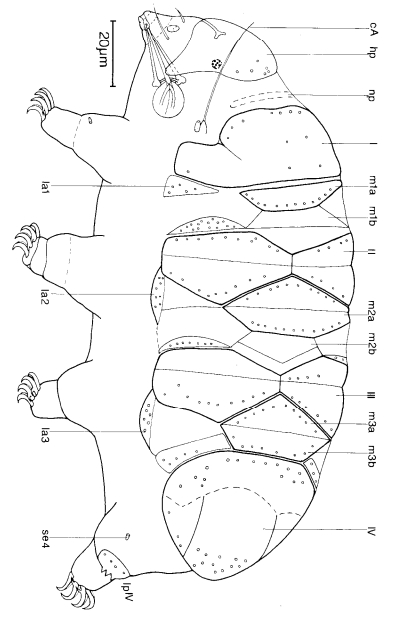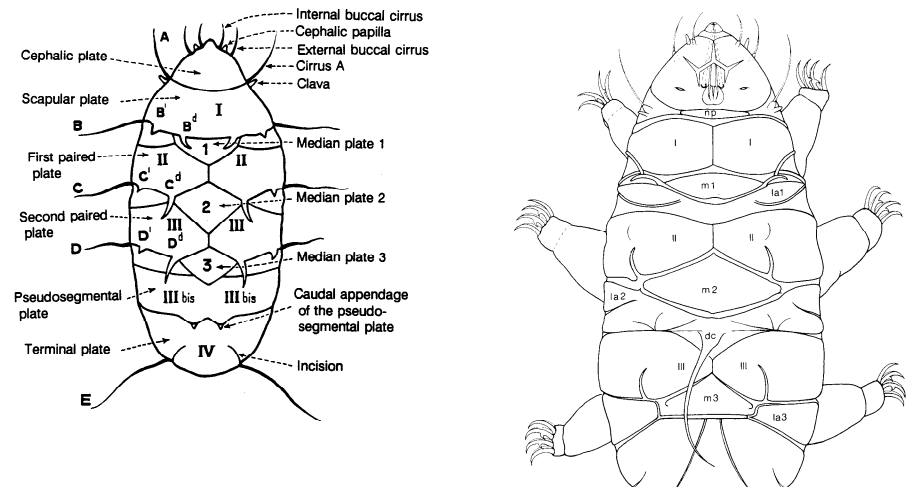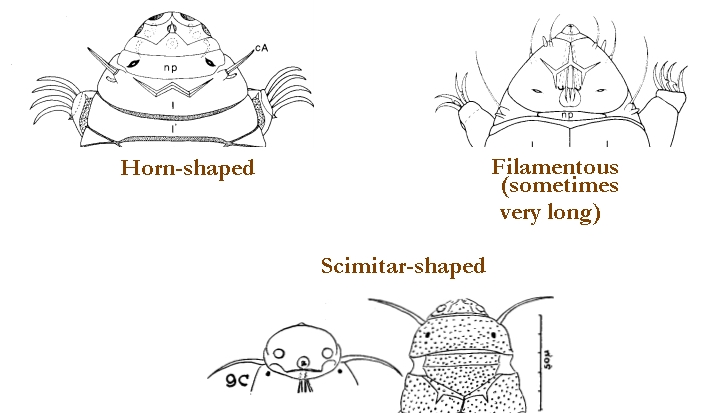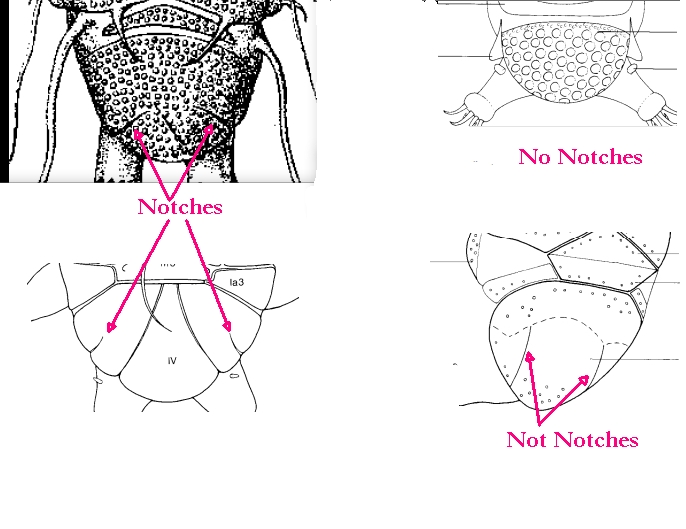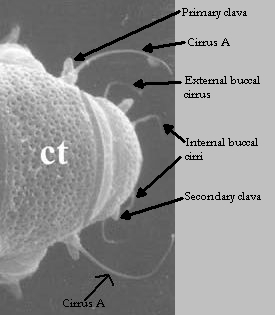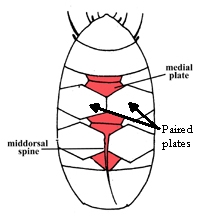Isohypsibiidae

Isohypsibiidae from Marley et al. 2011: “Isohypsibioidea. Claw pairs of similar size and shape. External and internal claws exhibiting articulation (the basal section and secondary branch form a solid unit while the primary branch and secondary branch articulate). Claws Isohypsibius-type, forming a right-angle between basal section and secondary branch. AISM ridge-like.” Citations: Marley NJ, McInnes SJ, […]
Hexapodibiidae

Hexapodibiidae from Cesari et al. 2016: “Double claws asymmetrical with respect to the median plane of the leg (2121), or with only the mainbranch, with the secondary branch being reduced or sometimes absent on some legs. Claws of Hexapodibius type very short and without a common basal tract, with a base as large as the sum of primary and […]
Isohypsibioidea

Isohypsibioidea from Marley et al. 2011: “Parachela. Claws asymmetrical (2121); Isohypsibius-type claw pairs; AISM ridged.” Isohypsibioidea from Bertolani et al. 2014: “Double claws asymmetrical with respect to the median plane of the leg (2121), normally with similar shape and size on each leg; double claws of the Isohypsibius type (secondary branch of the external claw inserted perpendicularly on the claw basal tract), […]
Haplohexapodibius
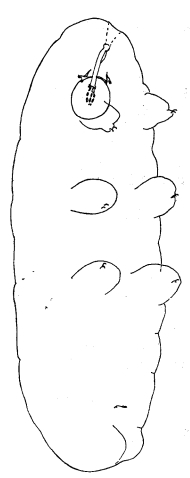
Genus description from Pilato & Beasley 1987: “hind legs reduced to short stumps lacking claws. First three pairs of legs with two single claws. Bucco-pharyngeal apparatus with the buccal tube provided with the ventral strengthening bar. Mouth without peribuccal lamellae, provided with 6 peribuccal papulae and 6 peribuccal lobes. Pharyngeal bulb provided with apophyses and […]
Haplomacrobiotus
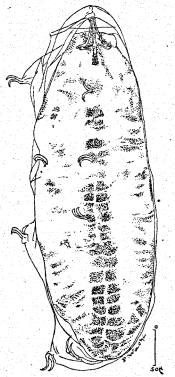
Genus description from May 1948: “… la présence de deux griffes simples…” Translated: “…presence of two simple claws…” Note: May describes simple claws (lacking secondary branches) on all eight legs; Ramazzotti & Maucci report this on the first three legs only, with a tiny secondary branch on legs IV, barely visible (not from May, perhaps […]
Hexapodibius

Genus description amended by Schuster et al. 1980: “Peribuccal papulae and buccal lamellae absent; six peribuccal lobes present. Mucrones present; buccal tube short, rigid, without spiraled thickenings. Pharynx with apophyses and macroplacoids; without microplacoids and septulum. Cuticle without pores. Two small double claws of legs I-III of similar shape and size, not connected; without lunulae; sequence 2,1,2,1; […]
Isohypsibius
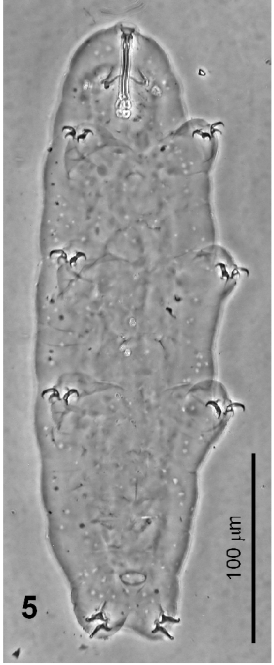
Genus description from Thulin 1928: “Krallen vom zweiten Typus. Für die von mir beobachteten Arten gilt ferner, dass die Muskelfortsätze am vorderen Teile der Mundröhre crista-förmig sind (bei undulatus, septentrionalis und Sattleri konnte dies jedoch nicht sicher festgestellt werden). Weiter ist bei ihnen der hinter dem vierten Bauchganglion inserierende Transversalmuskel jeder Seite einfach oder aus 2-3 dicht aneinander verlaufenden […]
Paradiphascon
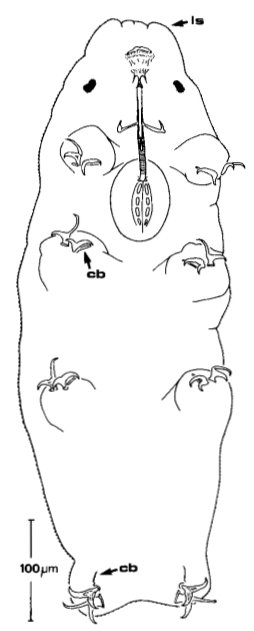
Isohypsibioidea from Marley et al. 2011: “Parachela. Claws asymmetrical (2121); Isohypsibius-type claw pairs; AISM ridged.” Isohypsibioidea from Bertolani et al. 2014: “Double claws asymmetrical with respect to the median plane of the leg (2121), normally with similar shape and size on each leg; double claws of the Isohypsibius type (secondary branch of the external claw inserted perpendicularly on the claw basal tract), […]
Ramajendas
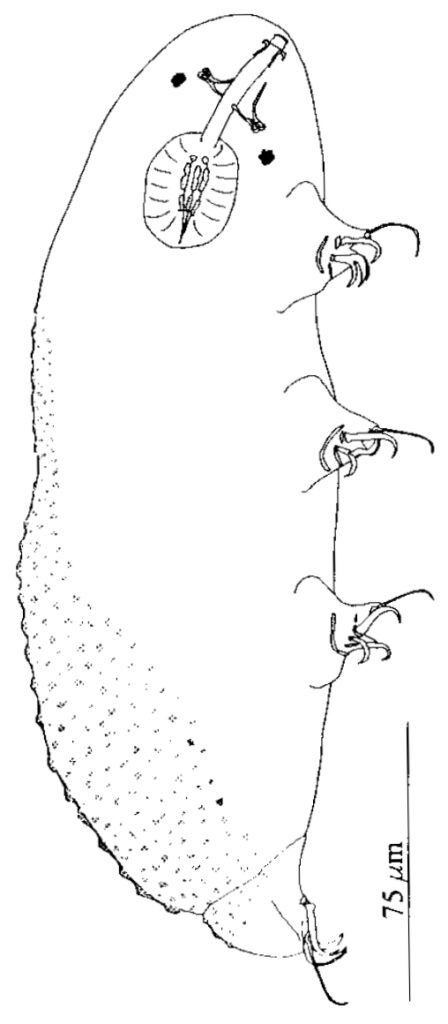
Isohypsibiidae from Marley et al. 2011: “Isohypsibioidea. Claw pairs of similar size and shape. External and internal claws exhibiting articulation (the basal section and secondary branch form a solid unit while the primary branch and secondary branch articulate). Claws Isohypsibius-type, forming a right-angle between basal section and secondary branch. AISM ridge-like.” Genus description from Pilato & Binda 1990: […]
Thulinius
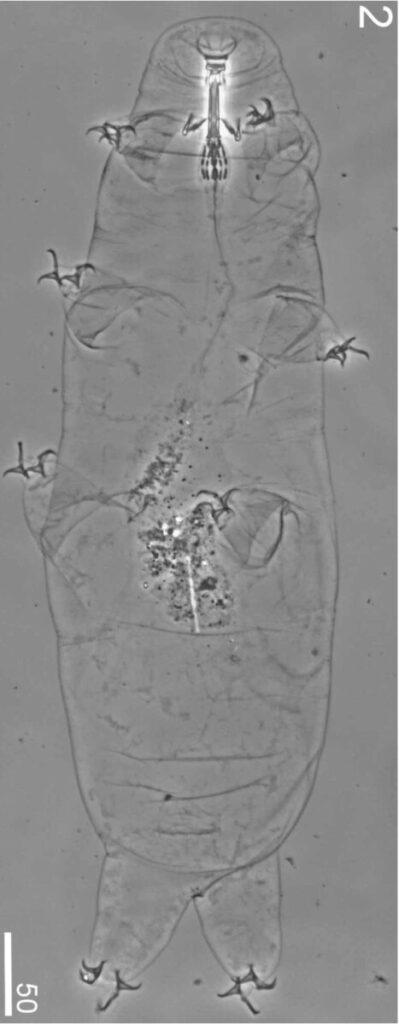
Isohypsibioidea from Marley et al. 2011: “Parachela. Claws asymmetrical (2121); Isohypsibius-type claw pairs; AISM ridged.” Isohypsibioidea from Bertolani et al. 2014: “Double claws asymmetrical with respect to the median plane of the leg (2121), normally with similar shape and size on each leg; double claws of the Isohypsibius type (secondary branch of the external claw inserted perpendicularly on the claw basal […]




